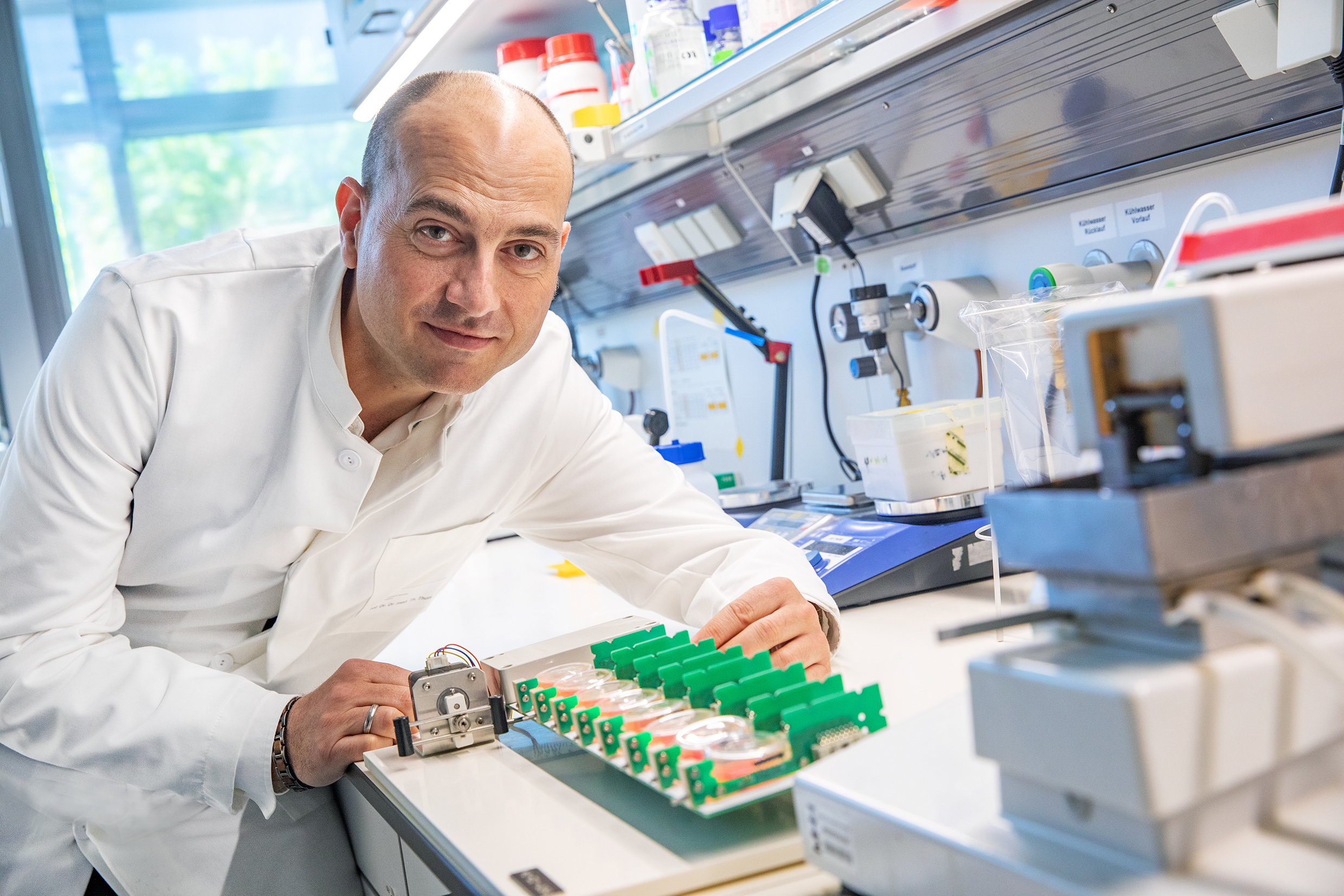EU funds research project to elucidate pathological cardiac remodelling caused by cancer drugs with around 2.5 million euros

Wants to stop heart injuries caused by chemotherapy and SARS-CoV-2 infections: Professor Dr Dr Thomas Thum. Copyright: Karin Kaiser / MHH
04.05.2022
Heart failure is one of the most common causes of death worldwide. The disease, known in medicine as cardiac insufficiency, affects about four million people in Germany. One of the main causes are remodelling processes in the heart muscle, which can be triggered for various reasons - for example, by the side effects of chemotherapy or an infection with the coronavirus SARS-CoV-2. So far, there is no treatment option that can stop or even reverse the course of the disease. Professor Dr. Dr. Thomas Thum, head of the Institute of Molecular and Translational Therapeutic Strategies at the Hannover Medical School (MHH), is now looking for such a strategy with his research project REVERSE. The European Research Council (ERC) has awarded him an ERC Advanced Grant, one of the most highly endowed prizes for absolute top-level research, and is supporting the project with 2.5 million euros over five years.
Ring-shaped RNA controls processes in body cells
In his project, the scientist focuses on so-called circular RNAs (circRNA). They belong to the group of non-coding RNAs (ncRNA), so they do not function as a blueprint for protein production and therefore do not transcribe genetic information. However, they are not "rubbish" either, but regulate many processes within the cells. Professor Thum has been studying the functions of these RNAs in cells for a long time. "Within the family of non-coding RNAs, circRNAs are particularly stable and species-conserved, i.e. largely unchanged in the course of evolution," explains the cardiologist. "This makes them ideal targets for drugs."
Chemotherapy damages the heart
In the REVERSE project, Professor Thum and his research team will first look for circRNAs that control the cardiac remodelling process. This side effect on the heart is caused, for example, by certain drugs used in cancer treatment. "The cardiotoxicity caused by chemotherapy often depends on the dosage of the drug," the cardiologist emphasises. In this case, the heart muscle is attacked to such an extent that the heart can no longer pump at its full capacity. "There is a risk that after the treatment the tumour is gone, but the heart is permanently damaged." Too low a dosage, on the other hand, increases the risk that the tumour will not disappear completely. Many cancer patients are therefore closely monitored by ultrasound to see if their heart function deteriorates. But SARS-CoV-2 also attacks the heart muscle. "In up to ten per cent of severely affected COVID-19 sufferers, new heart failure that was not present before the infection can occur within a year because the virus attacks and destroys heart muscle cells, among other things."
Examination of circRNAs in "living heart slices".
Identifying the circRNAs involved is like the famous search for a needle in a haystack. There are probably an estimated 20,000 to 30,000 different circRNAs in our cells, and only about ten are known to date about their mode of action. In a first step, a circRNA library will be searched for suitable candidates that could be involved in the heart damage caused by chemotherapy or the SARS-CoV2 infection with the help of an automated screening procedure. The cardiologist then wants to check whether the selected RNA structures actually control the cardiac remodelling in each case. To do this, the research team uses the method of "living heart slices". These are wafer-thin slices of damaged heart muscle tissue that was removed during an operation. In nutrient solution, these heart muscle slices live and continue to beat for many days to weeks. "We first test the mode of action of our circRNA candidates in the living heart slices," says the scientist. In a next step, the research team then wants to investigate how they can stop the two different forms of cardiotoxicity. In this way, the researchers hope to find new therapeutic approaches for both causes of cardiac injury, for which there is currently no specific treatment.
SERVICE:
For further information, please contact Professor Dr. Dr. Thomas Thum, thum.thomas@mh-hannover.de, telephone (0511) 532-9174.